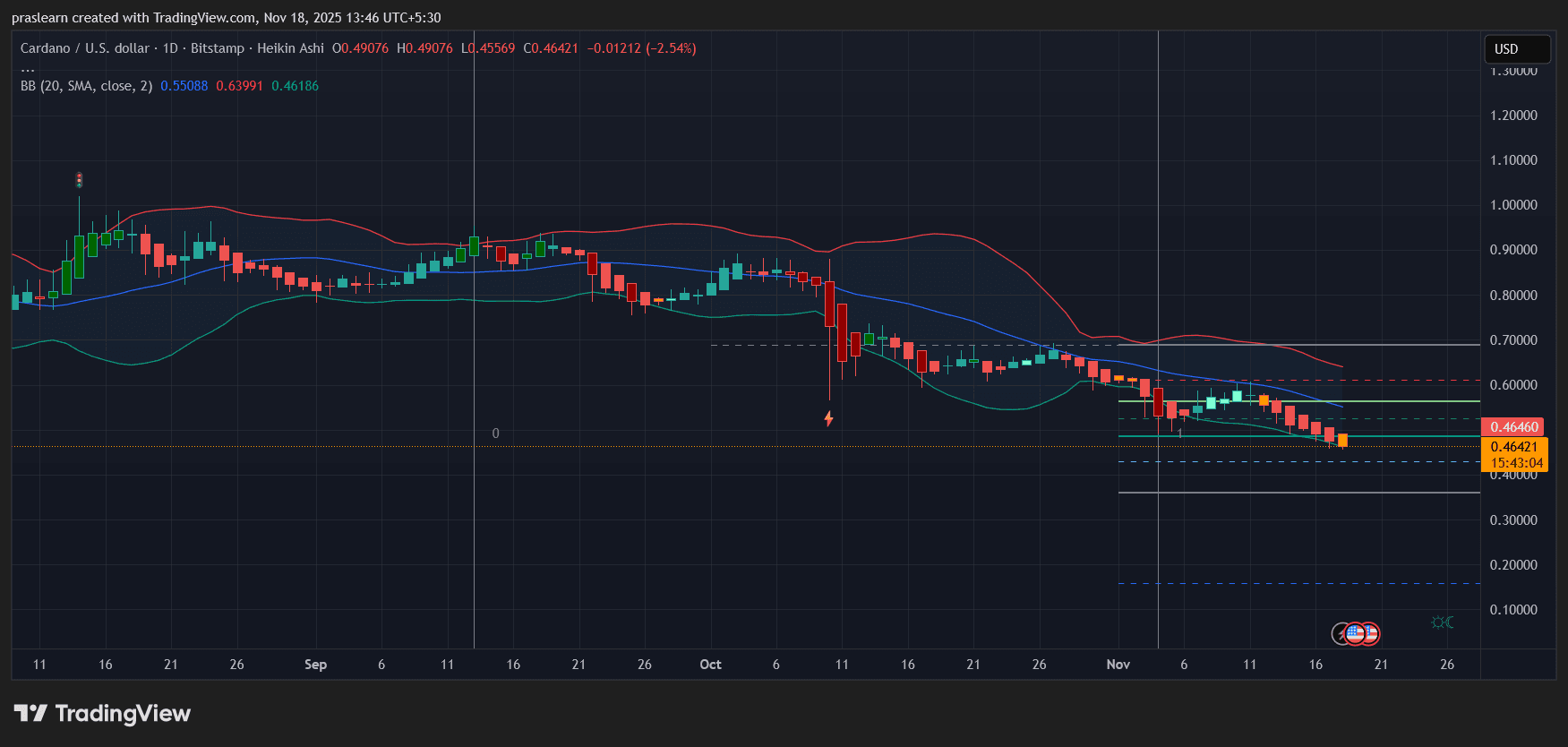Stablecoins May Experience a "ChatGPT Moment," Potentially Driving the Market to $4 Trillion, Says Citi
- Citi forecasts stablecoin market to hit $4 trillion by 2030, up from $3.7 trillion, citing blockchain's "ChatGPT moment" and regulatory clarity like the U.S. Genius Act. - Current $280B market sees 88% demand from crypto-native activities, but B2B stablecoin payments surged to $3B/month in 2025, signaling mainstream adoption. - JPMorgan predicts only $500B by 2028, highlighting barriers like low yields, while Citi and Standard Chartered emphasize institutional backing and infrastructure growth. - Stablec

Citi has updated its outlook for the stablecoin sector, now anticipating the market could hit $4 trillion by 2030—an increase from its earlier optimistic estimate of $3.7 trillion. The bank credits this rapid growth to what it calls blockchain’s “ChatGPT moment,” as stablecoins accelerate their move into the mainstream.
According to Citi, the stablecoin market is currently valued at $280 billion, with 88% of its use tied to crypto-centric activities including trading, DeFi collateral, and treasury operations. Payments represent only 6% of usage, but industry figures like Confirmo CEO Anna Strebl have observed rapid growth in practical, real-world applications. Business-to-business stablecoin payments have soared from less than $100 million in 2022 to over $3 billion by 2025, indicating a transition from a niche product to a mainstream financial tool. The Genius Act, as the first federal regulatory guideline for stablecoins, has further validated the industry, prompting large companies to focus on onchain solutions.
Citi’s projections differ from JPMorgan’s more cautious $500 billion estimate for 2028, which is based on limited mainstream uptake and continued dependence on crypto-native demand. JPMorgan maintains that stablecoins still face obstacles such as low returns and difficulties in converting to fiat, which limit their ability to replace conventional financial products like money market funds or digital wallets. In contrast, Citi and Standard Chartered—which predicts a $2 trillion market by 2028 if regulations are favorable—believe that institutional support and infrastructure improvements will pave the way for widespread adoption.
The report also notes a significant increase in stablecoin startup activity, with fundraising reaching $537 million in 2025—five times higher than in 2024. Leading companies such as
Although forecasts vary, experts agree that stablecoins are transforming the global financial landscape. Edward Carroll from MHC Digital Group stressed the importance of the GENIUS Act in enabling instant settlements and regulatory compliance, which benefits blockchains such as
Disclaimer: The content of this article solely reflects the author's opinion and does not represent the platform in any capacity. This article is not intended to serve as a reference for making investment decisions.
You may also like
Ethereum price outlook: bears pierce $3,000 as sell-off pressure mounts

Aster News Today: Aster Sets New Standard for DEXs by Introducing CEX-Level Liquidity Hybrid
- Aster launches Stage 4 "Harvest" airdrop and $10M "Double Harvest" trading competition to boost ecosystem growth. - Dual-reward system allows users to earn airdrop and competition tokens simultaneously through trading activity. - Platform develops on-chain order-book protocol for CEX-like speeds and expands gold/index perpetual contracts. - Global expansion includes Binance events and wallet integrations, while token utility expands to staking and governance. - Hybrid model combines decentralized infrast
The Federal Reserve's Change in Policy and Its Unexpected Effect on Solana's Price Rally
- The Fed's 2025 shift to easing policy, ending QT and cutting rates, injected liquidity, boosting Solana and other cryptos as risk assets. - Historical parallels show Fed liquidity expansions correlate with crypto rallies, though Solana's December 2025 price data remains unclear. - Cryptocurrencies now exhibit macroeconomic sensitivity, with Fed easing potentially increasing demand for high-volatility assets like Solana. - Investors must balance Fed-driven liquidity benefits against crypto's volatility an

Cardano Price Crashes: Is $0.40 Next?
